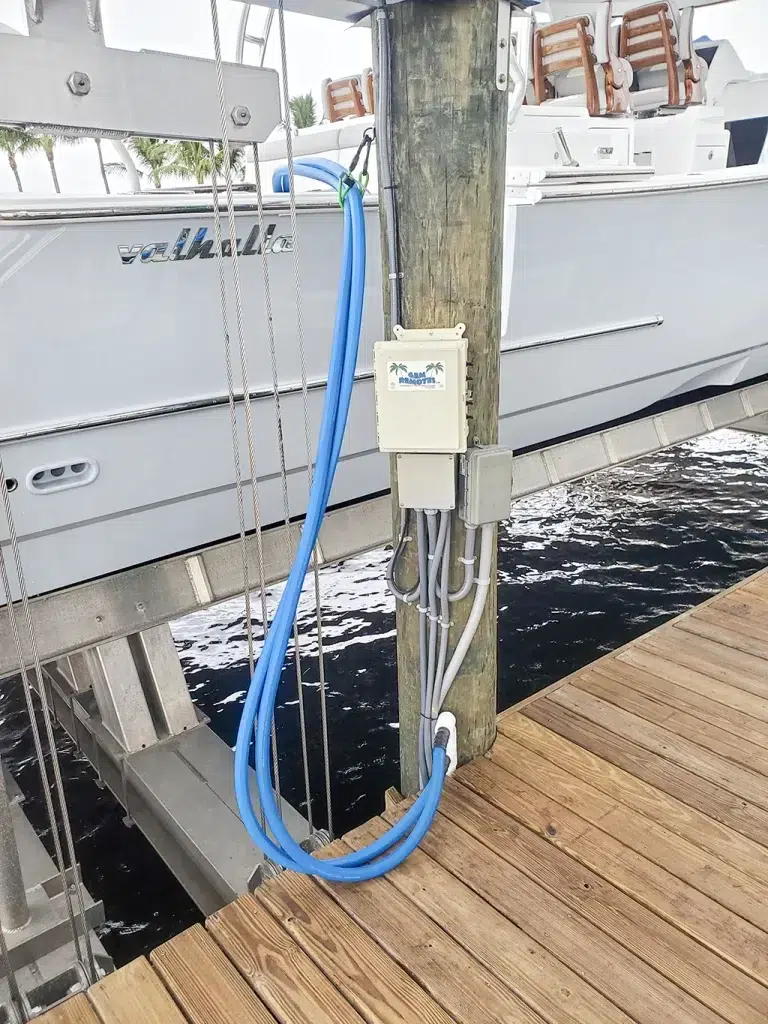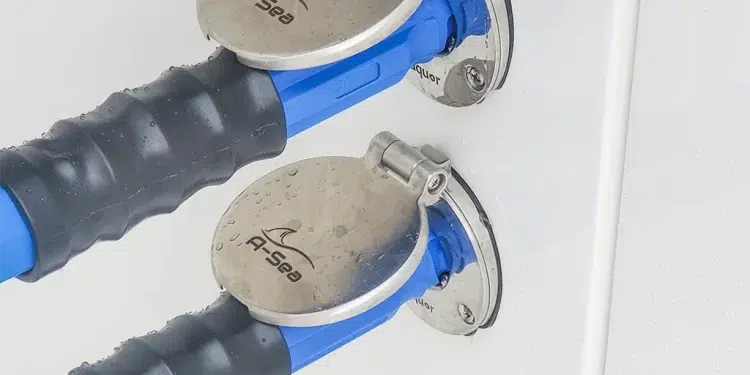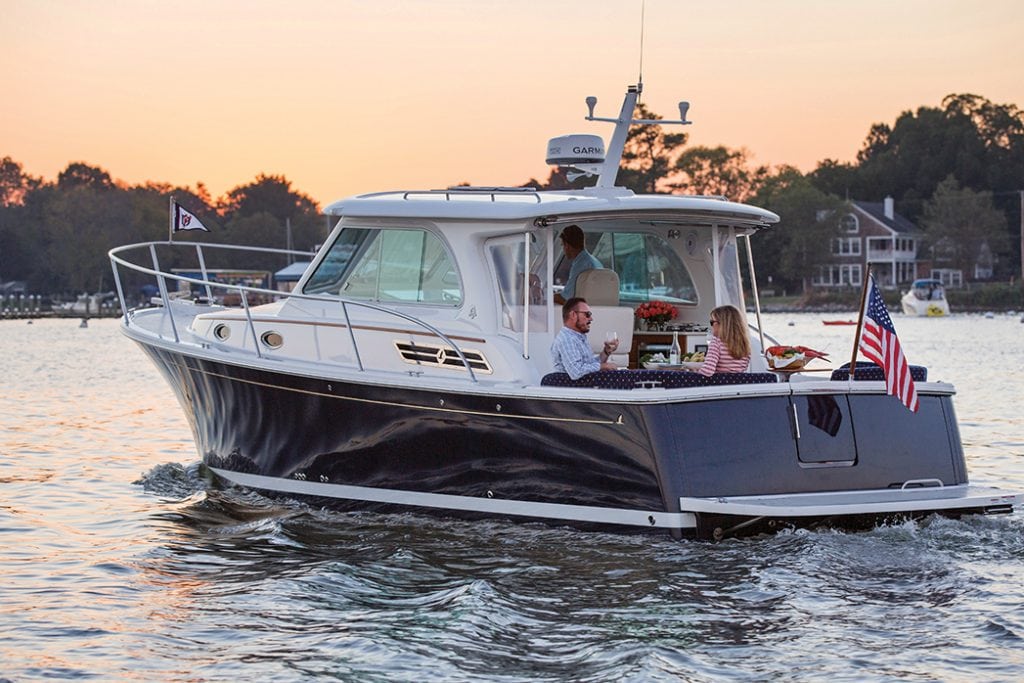Keep your boat cool and healthy while on the hoist.
Running the air conditioner, chiller plates, icemaker, livewells, and spooling up the gyrostabilizer all require a raw-water supply. That usually means the boat has to be in the water so the intakes can feed the various systems. When Mark Boettcher of Summit Marine Technology passed a brand-new 42-foot boat regularly in a New Jersey marina that had been sitting on a lift for two summers, his thoughts kept feeling for the boat.
“I wasn’t only thinking of adhesives coming apart in the cabin, I was thinking of woods getting milky, soft goods getting musty and mildew, and just felt sorry for this boat,” he says. He had an idea of how to solve such a situation, but wasn’t sure how many boats really needed this type of product, so he kept his focus on another raw-water issue he was trying to fix on his boat and filed the idea away. Fast-forward four years and a chance encounter with Matt Woonton of B&M Marine brought that idea back to life, especially when Woonton commented how many inquiries he received each day with that on-the-lift problem. Boettcher and Woonton worked to solve the issue, and in 2023, a partnership was born, and A-Sea Lifted became a reality.

Introducing A-Sea Lifted: The Intelligent Raw-Water Supply System for Elevated Vessels
“What we are is an intelligent raw-water supply source for boats on lifts,” explains Boettcher. “We use the word intelligent because we read the raw water relays on a boat with our own relay. Once we capture that closed circuit that is going to the boat’s raw water pump, we transmit a signal through the 902 MHz frequency to our dockside pump controller to energize our pump. In other words, when the air conditioner on the boat or any raw-water device on the boat that we’re monitoring kicks on, we see that in real time and transmit that signal to the dock to mimic the same things to our pump.” So, the water begins to flow and the boat’s equipment operates as if the boat was in the water. The same happens when the equipment reaches its shutoff threshold. “The device sends an open circuit to its own pump and then we read that and the signal shuts off our pump at the dock.”
Subscribe For More DIY Content Here
The A-Sea Lifted system allows the captain or the boat owner to utilize all their chosen raw-water systems while the boat is on the lift. Of particular benefit is running the air conditioning. Boettcher probably wouldn’t have felt so bad for the 42-foot boat in New Jersey knowing the air conditioning was preventing mold and mildew and keeping the boat healthy. It’s also nice for the owner and guests to get on a boat that’s already cool and comfortable when the summer heat is in full effect, and even have the gyro spooled up and ready to go. Anglers can also benefit from the system because the ice chipper can have a load of ice ready, keep bait frozen or beverages cold, and they can run the livewells. “On one of our recent installs, a Valhalla fifty-five, the owner is running the entire chiller system for his vessel and is always trip ready,” says Boettcher.
How it Works
A-Sea Lifted has one patent and another one pending. The technology requires minimal space and power on both the boat and at the dock. “We have two different types of pumps used for the dock,” says Boettcher. “Our standard unit is a submersible pump that floats up and down with a float on a slide [attached to a dock piling], and we have our high-volume unit for larger boats that is in a dock box but still activated and deactivated in the same fashion.”
To keep the water as clean as possible, the snorkel or tube that’s in the water is set below the surface. “The standard unit is always floating with the tide up and down. That’s always taking water about twenty inches below the surface,” says Boettcher. “The high-volume unit is usually set about two to three feet above the sea floor of the slip. It’s not getting the silt off the bottom, and it’s not getting the stuff off the top.”
On the boat, hydrants are installed to connect the hose(s) from the dock. From the hydrant, a hose connects to the sea strainer (or the sea chest strainer) before connecting to the accessory. A small relay box with the transmitter is installed to complete the setup.
One of the challenges was a reliable signal between the boat and the dock. “We originally looked at Bluetooth and Wi-Fi to try to make that communication path between the boat, but the testing I did found it very unreliable,” says Boettcher. “We found a company that made a product using the 902 MHz band which is good up to three hundred feet…. The main thing we wanted to do was get that communication path so we only sent water to the boat when the boat asks for it, which is why we call it the intelligent raw-water supply.”
The single system can put 16 gallons of water per minute to the boat, while the high-volume system can provide 28 gallons a minute. “We could actually go bigger for bigger vessels if they require,” says Boettcher. It does provide lift manufacturers the option to build larger lifts. Providing raw water to your boat while on the lift not only protects it from interior overheating, but gets systems up and running before heading out for the day. a-sealifted.com
-by Jeremy Peters














